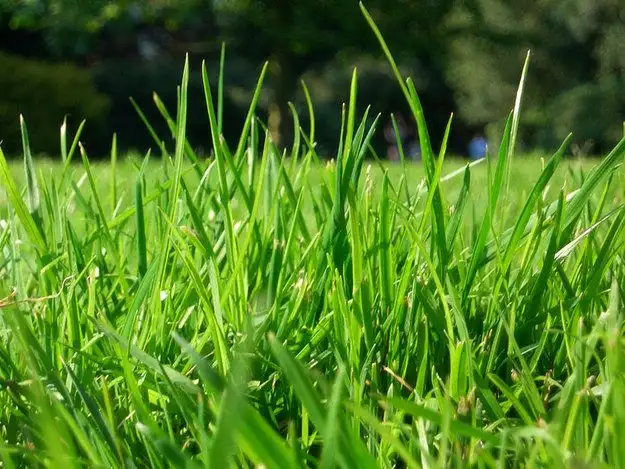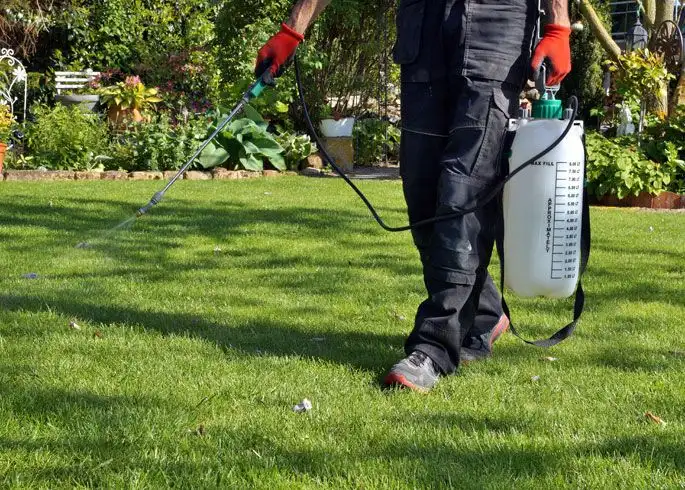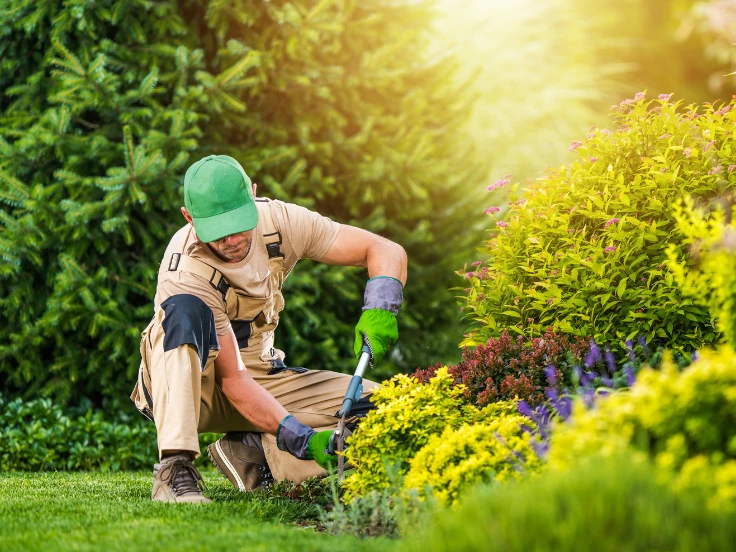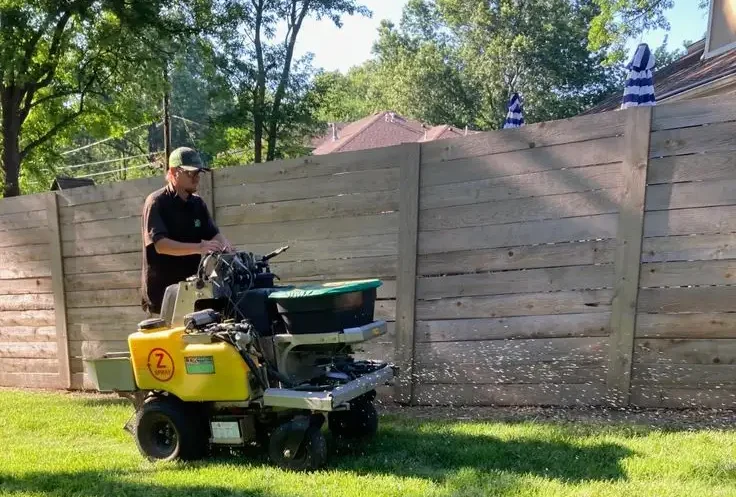A healthy, green lawn is the dream of every homeowner. However, summer heat can turn your beautiful grass brown and weak if you don’t care for it properly. That’s why learning how to fertilize lawn in summer the right way is essential.
In this guide, we’ll explain when and how to fertilize your lawn, what type of fertilizer works best in hot weather, and practical tips to keep your grass thriving all season long.
Why Summer Fertilization Matters
During summer, your lawn faces intense heat, heavy foot traffic, and possible drought. These stress factors make it difficult for grass to stay green and healthy. Fertilizing provides the nutrients it needs to repair damage, maintain color, and build strong roots.
Moreover, a properly fertilized lawn can resist pests, weeds, and diseases more effectively. Therefore, summer fertilization isn’t just about looks — it’s about protection and long-term growth.
When to Fertilize Your Lawn in Summer

Timing plays a key role in how effective your fertilizer will be. Generally, the best time to fertilize lawn in summer is in early to mid-summer, depending on your grass type. For cool-season grasses (like fescue, bluegrass, and ryegrass): Fertilize lightly in early summer or wait until fall. Too much summer fertilizer can stress these grasses.
For warm-season grasses (like Bermuda, St. Augustine, zoysia, and centipede): Fertilize in late spring and again in mid-summer for strong growth. Always apply fertilizer when your grass is actively growing, and avoid fertilizing during drought or extreme heat waves.
Choosing the Right Fertilizer
Not all fertilizers are created equal. For summer, select a fertilizer that releases nutrients slowly and steadily. This approach reduces the risk of burning your lawn while keeping it nourished over time.
Look for these key features:
-
Slow-release nitrogen: Provides long-term feeding without stressing your lawn.
-
Balanced N-P-K ratio: A formula like 16-4-8 supports leaf growth, root health, and resistance.
-
Added micronutrients: Iron, magnesium, and potassium enhance color and heat tolerance.
Organic options such as compost or natural lawn food are excellent for maintaining soil health and minimizing chemical buildup.
How to Fertilize Lawn in Summer Step-by-Step
Fertilizing properly ensures your lawn absorbs the nutrients efficiently. Follow these simple steps:
-
Mow your lawn first: Keep grass at a moderate height before fertilizing.
-
Water lightly before application: Moist soil helps nutrients penetrate better.
-
Apply evenly: Use a broadcast or drop spreader for uniform coverage.
-
Avoid overlapping: Too much fertilizer in one area can cause burns.
-
Water again: Light watering after application helps activate the fertilizer.
Transitioning carefully between each step ensures the best results and keeps your lawn safe from overfeeding.
Common Mistakes to Avoid
Even with good intentions, many homeowners make mistakes that harm their lawns. Here are a few to avoid:
-
Over-fertilizing: More isn’t always better. Too much fertilizer can burn your lawn.
-
Fertilizing in extreme heat: Always wait for a cooler part of the day or early morning.
-
Ignoring watering: Fertilizer without adequate moisture won’t work effectively.
-
Using the wrong type: Choose the right formula for your specific grass type.
By avoiding these errors, your summer fertilization routine will yield better, safer results.
Watering and Maintenance After Fertilizing

After you fertilize lawn in summer, proper watering is essential. Watering deeply helps nutrients move into the soil and reach the roots. Aim for 1 to 1.5 inches of water per week, either through rainfall or irrigation.
Also, mow regularly but never cut more than one-third of the grass blade at a time. This prevents stress and helps maintain density. Additionally, adding mulch or leaving grass clippings on the lawn can further improve soil fertility and moisture retention.
If you enjoy nurturing plants, you might also like learning how to replant an aloe vera plant a great guide that complements your lawn care routine by teaching easy indoor plant maintenance.
Natural Ways to Boost Summer Lawn Health
If you prefer eco-friendly lawn care, there are natural methods to keep your lawn healthy during summer.
-
Compost tea: Acts as a gentle, organic fertilizer.
-
Grass clippings: Return nutrients back to the soil naturally.
-
Aeration: Improves root development and nutrient absorption.
-
Overseeding: Helps repair thin or patchy spots without chemicals.
These natural practices not only make your lawn sustainable but also support long-term soil health.
Best Practices for Hot Weather Fertilization

Summer heat can be challenging, but with the right strategy, you can minimize stress on your grass.
-
Fertilize early morning or late evening to avoid burning.
-
Use slow-release or organic fertilizers.
-
Always water after applying fertilizer.
-
Avoid mowing immediately after fertilizing.
-
Keep a consistent watering schedule during dry periods.
These small steps make a big difference in maintaining a lush, vibrant lawn throughout the summer.
FAQs
1. Is it safe to fertilize lawn in extreme heat?
It’s best to avoid fertilizing during extreme heat. High temperatures can cause fertilizer burn and stress the grass. Wait for cooler mornings or evenings to apply it safely.
2. How often should I fertilize my lawn in summer?
For most lawns, once or twice during summer is enough. Over-fertilizing can do more harm than good. Follow the product label and your grass type’s needs.
3. What happens if I don’t water after fertilizing?
Without water, fertilizer can sit on the grass blades and cause burning. Always water lightly after applying fertilizer to help it reach the roots.
4. Can I use organic fertilizer in summer?
Yes! Organic fertilizers like compost, manure, or natural lawn food are excellent choices. They release nutrients slowly and improve soil structure without chemical buildup.
5. How long after fertilizing can I mow my lawn?
Wait at least 24 to 48 hours after fertilizing before mowing. This gives the fertilizer time to settle into the soil and avoids uneven distribution.
Conclusion
Learning how to fertilize lawn in summer properly can completely transform your yard. First, by choosing the right fertilizer, then applying it at the correct time, and finally maintaining consistent watering, you’ll enjoy a vibrant, healthy lawn all season long.
Moreover, remember balance is key. Therefore, don’t over-fertilize or skip watering, and instead, always match your method to your grass type. Additionally, proper timing, along with regular care, ensures your grass stays strong even in heat. In fact, a well-fertilized lawn looks lush and feels soft underfoot.
If you love keeping your home’s greenery thriving indoors as well, check out this helpful guide on growing aloe vera indoors it’s a perfect complement to your outdoor gardening routine. Consequently, your entire space, both inside and out, will flourish beautifully. Ultimately, with these simple yet effective tips, your summer lawn will stay lush, green, and picture-perfect!
Consequently, your home’s outdoor space will become more inviting and beautiful. Ultimately, with these simple yet effective tips, your summer lawn will stay lush, green, and picture-perfect!


















